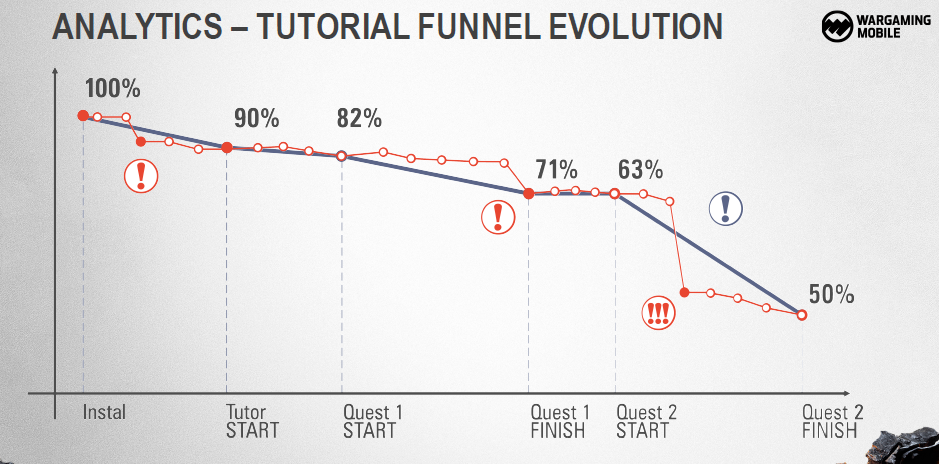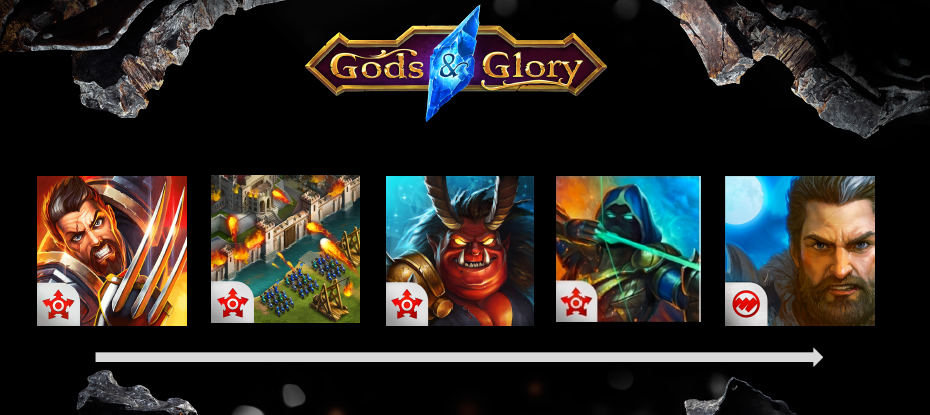What should be remembered when pre–launching a mobile game, – says Andrey Zimenko, head of the Wargaming division for publishing mobile games.
The report was read at White Nights St.Petersburg 2017. We have prepared a printed version of the speech.

Andrey Zimenko
Softlonch is the most stressful period for any team working on a project.
At this point, it is decided what will happen to the project next. His fate depends on whether he will be able to achieve the required indicators or not.
We communicate a lot with external developers, and based on what problems they have, I will tell you what needs to be taken into account before entering the softlonch so that it goes as smoothly as possible.
1. Be ready to scale the product
Those who have been in game development for a long time probably remember that earlier, when the project was released and became unexpectedly successful, it usually led to the fact that the servers fell after a few days, and the sysadmins did not sleep at night. Everyone had to run frantically, deliver servers and somehow try to scale according to the number of users who came.
All this has long been unnecessary, because now the simplest solution is cloud hosting, which will allow you to do it without getting up from the table. Its use solves a number of problems that previously required a longer solution and more resources.
Also, before launching, contact some expert, an engineer who has already had similar experience, and try to provide for those “bottlenecks” that are almost always present in the architecture and can also prevent scaling efficiently and quickly.
2. Implement analytics
Today it has also become much easier to work with it. This became possible thanks to the appearance of ready-made solutions. Often all that is needed is to implement the SDK. After that, almost all dashboards will immediately become available.
The only thing we advise all developers to do is to keep the most important events and data on their side.
This will allow you to validate the service and make sure that everything is considered correct, and also, if something suddenly goes wrong, restore most of the necessary metrics, such as DAU, ARPPU and other indicators, which are used to assess how the project performs, according to transactions.
Please note that it is necessary to validate all the data that you have reflected in analytics, not only after integration, but also with each update, because something always changes, something breaks, and it must be noticed in advance, because otherwise it will lead to the fact that you will lose part of the data or you will to draw the wrong conclusions.
3. In analytics, pay special attention to onboarding
Analytics services can do a lot today. However, they will not be able to squeeze the most information out of onboarding (the stages of learning in the game, – ed.). This is something that is different in every game.
The events that you have displayed in this dashboard are determined by the development team, only it knows what follows, what the user does at the beginning of the game, how he develops.
It is often overlooked that charts with onboarding should be as detailed as possible. They should be configured so that they track any user click and allow you to see not only where the problem is, but also what it is.

4. Prepare for the purchase of traffic in advance
If the team plans to buy traffic, it is necessary to think in advance how you will test it.
Many people start doing this late: after some time after entering the softlonch. Because of this, extra time is spent searching for the best channels, ways to promote and create a suitable marketing strategy.
Start checking advertising channels immediately after the softlonch. Run as many tests as possible, which will allow you to determine in parallel how to promote the project in a few months while the project is improving.
Important: it is desirable to integrate traffic verification tools with analytics. This will allow you to see the data broken down by user engagement channels.
5. Prepare the content for ASO testing
Optimizing the app page in the store is the least transparent thing. Rarely can anyone tell which icons, which title, which screenshots on the application page will show the best results.
The most reliable way is to simply prepare all the options that you can come up with and try to conduct their A/B testing during the softlonch period so that by the time of release you have an effective description, icon and title.
This can greatly affect page conversions and, as a result, the competitiveness of your application.
Fortunately, there are now a lot of applications that can help you with this: Google Experiments, SplitMetrics, App Annie and Sensor Tower. Each of them provides some information on the performance of various elements.
ASO doesn’t end with a release.
We changed the icons of the Gods and Glory (2016) application after the global launch. They changed radically: first it was a man, then it was a castle, then a demon, an archer. Now we are back again to the man who looks like the first icon.

Each of these experiments, each icon change led to an improvement in conversion. She didn’t grow five times, but we could keep her on the same level. Icons, as well as banners, “burn out” over time, and they need to be rotated.
The video of the performance can be viewed here.
